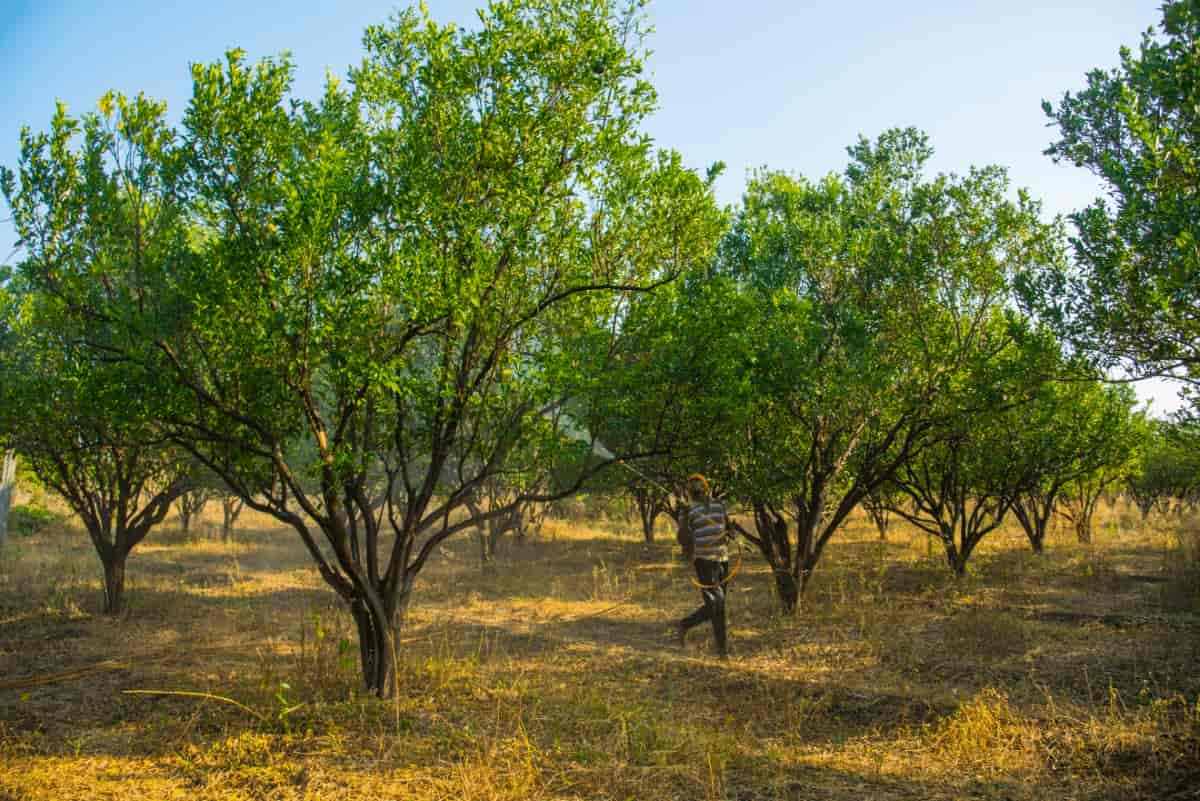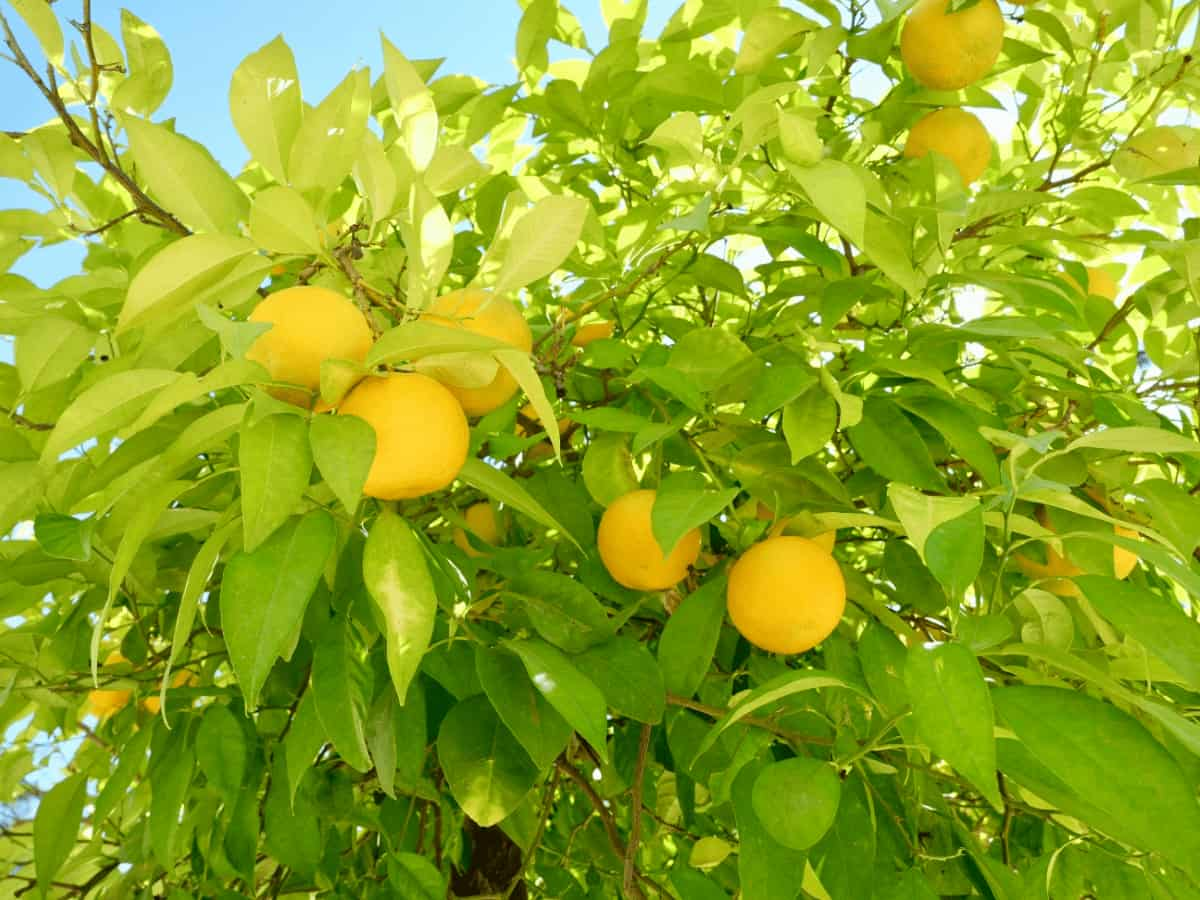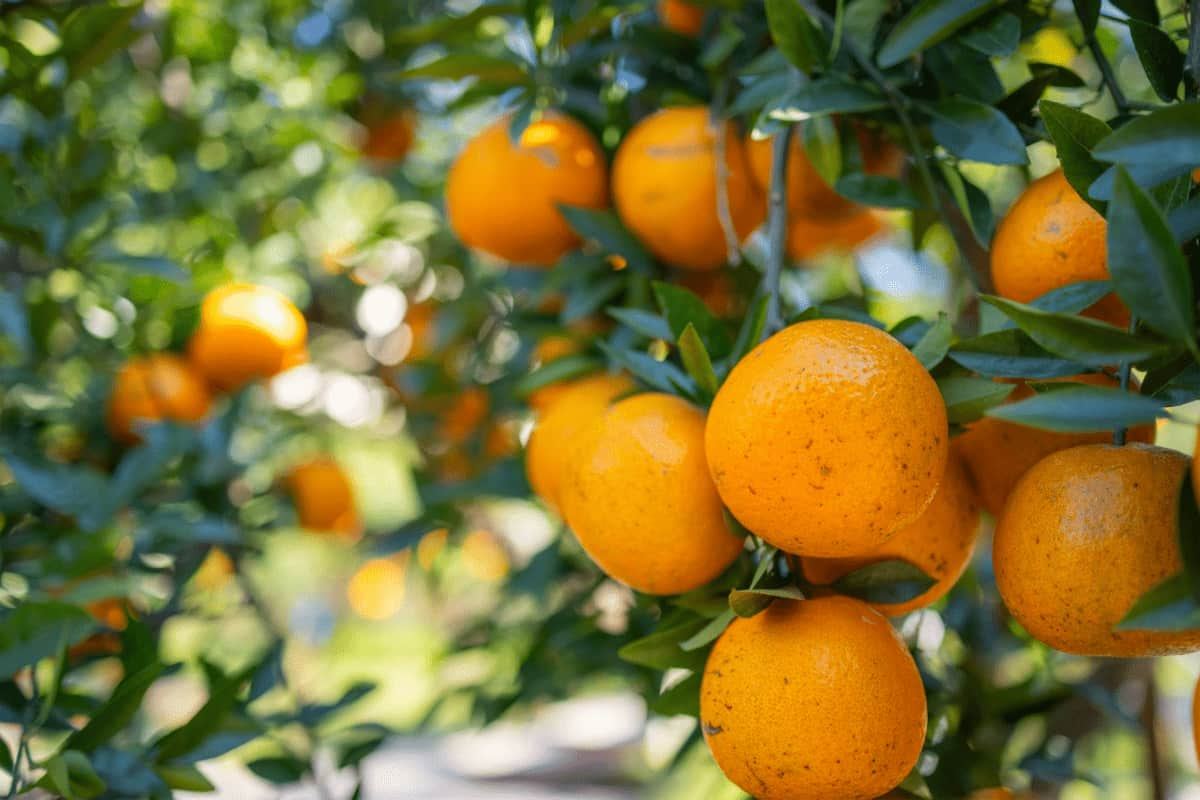Controlling orange pests naturally and organically is an eco-friendly and chemical-free approach to protecting your citrus trees and fruit. This method not only helps maintain a healthy and sustainable environment but also ensures that the oranges you harvest are safe to consume. Here, we will briefly discuss how to control orange pests with natural and organic treatments.

How to Control Orange Pests Naturally
Orange Pests: Identifying the Most Common Pests and Their Impact on Your Crop
- Citrus Psylla, a tiny insect, transmits a bacterium leading to Huanglongbing (HLB) disease, causing citrus tree decline.
- Bark Borers tunnel into tree trunks, weakening the tree’s structure.
- Citrus Leaf Miner’s larvae create serpentine tunnels in leaves, impairing photosynthesis.
- Citrus Whiteflies and Blackflies feed on sap, causing leaf distortion and weakening the plant.
- Aphids also sap-suck, excreting honeydew that promotes sooty mold growth.
- Citrus or Lemon Butterflies lay eggs on leaves, and their larvae consume foliage.
- Fruit Sucking Moths and Fruit Flies damage fruit, leading to rot and quality loss.
- Citrus Mites, Mealybugs, and Citrus Thrips cause leaf stippling and distortion, reducing fruit quality.
Using Neem Oil to Control Orange Pests: A Safe and Effective Method
Made from the neem tree seeds, neem oil contains compounds that disrupt pests’ feeding and reproduction, acting as a natural insecticide. It is an effective and safe natural remedy for controlling orange pests. Neem oil will not harm beneficial insects, such as pollinators and predators, preserving the ecosystem’s balance. It also degrades quickly, leaving minimal residue on fruit. Regular application of diluted neem oil can help manage a variety of common orange pests, such as aphids and mites.
In case you missed it: How to Control Grape Pests Naturally: How to Get Rid of Them with Natural and Organic Treatment

The Role of Beneficial Insects in Controlling Orange Pests: Introduction of Predatory Insects
Beneficial insects play a pivotal role in natural pest control within orange orchards. Introducing predatory insects like ladybugs, lacewings, and parasitic wasps can help manage common orange pests. These natural predators feed on harmful insects, reducing their populations. Ladybugs, for instance, are voracious aphid eaters, while parasitic wasps lay eggs in pest insects, leading to their demise.
This integrated pest management approach promotes a balanced ecosystem, minimizing the need for chemical interventions. It enhances orchard health, reduces the risk of pesticide residues, and contributes to sustainable, environmentally friendly orange production while preserving biodiversity and the natural equilibrium of the ecosystem.
Companion Planting: How Planting Certain Plants Together Can Deter Orange Pests
Companion planting leverages natural interactions between plants to deter orange pests. For instance, planting marigolds around orange trees can deter nematodes with their root-secreted compounds. Nasturtiums attract aphids, diverting them from the oranges. Aromatic herbs like basil and oregano can repel whiteflies.
Additionally, flowering plants like cosmos and alyssum attract beneficial insects like lacewings and ladybugs, which prey on pests. This symbiotic approach creates a balanced ecosystem, reducing the usage of chemical pesticides and promoting a healthier, more robust orange orchard.
Crop Rotation: How Rotating Your Orange Crop Can Help Control Pests
Crop rotation is a valuable strategy in pest control for orange orchards. Pests that rely on continuous food sources are disrupted by periodically changing the location of orange trees within the orchard. This practice interrupts their life cycles, reducing pest populations and disease pressure. For example, soil-borne pathogens and pests like nematodes can be suppressed when different crops are grown in the rotation, breaking the cycle of infestation. Crop rotation also helps maintain soil health and fertility.
Using Diatomaceous Earth to Control Orange Pests: A Non-Toxic and Organic Method
Diatomaceous Earth (DE) is a non-toxic, organic method for controlling orange pests. It is made up of the fossilized remains of diatoms, which are sharp microscopic particles. When sprinkled around the base of orange trees or on leaves, DE acts as a mechanical insecticide. It pierces the exoskeleton of crawling pests like ants, aphids, and snails, dehydrating and ultimately killing them.
In case you missed it: How to Control Kiwi Pests Naturally: How to Get Rid of Them with Natural and Organic Treatment

DE is safe for humans, pets, and beneficial insects. This eco-friendly approach reduces pest populations without harmful chemicals, making it a valuable tool in organic pest management for orange orchards while minimizing environmental impact.
Traps and Barriers: How to Use Traps and Barriers to Control Orange Pests
Traps and barriers are effective tools for controlling orange pests. Sticky traps coated with adhesive substances can capture flying insects like fruit flies and whiteflies. Pheromone traps attract and trap specific pests, disrupting their mating cycles. Physical barriers, such as tree wraps or collars, prevent crawling insects from reaching the tree trunk or protect against rodents.
Copper tape can deter snails and slugs, while row covers shield trees from airborne pests. By strategically employing these traps and barriers, growers can reduce pest infestations, limit damage, and minimize the need for chemical interventions.
Biological Control: How to Use Parasitic Wasps to Control Orange Pests
Parasitic wasps are invaluable for the biological control of orange pests. To use them effectively, release species such as Aphytis melinus against California red scale or Tamarixia radiata against Asian citrus psyllid. These wasps lay their eggs inside or on the pest insects, killing them. Timing is crucial; release parasitic wasps when pest populations are low to ensure they establish and reproduce. Provide nectar sources, like flowering plants, to sustain the beneficial wasps. Encourage their presence by avoiding broad-spectrum pesticides that can harm them.
Integrated Pest Management (IPM): A Holistic Approach to Controlling Orange Pests
Integrated Pest Management (IPM) is a holistic approach to controlling orange pests effectively. It combines various strategies to minimize the need for chemical pesticides. IPM incorporates practices such as regularly monitoring and identifying pests, utilizing beneficial insects, implementing cultural procedures (like pruning and mulching), deploying traps and barriers, and employing natural and organic remedies. Chemical treatments are only used as a last resort and are chosen carefully when necessary.
In case you missed it: How to Control Lemon Pests Naturally: How to Get Rid of Them with Natural and Organic Treatment

Conclusion
Incorporating natural and organic treatments in orange pest control fosters sustainable and eco-friendly orchard management. By employing these eco-conscious strategies, growers can effectively combat pests while safeguarding their orange crops’ environment and quality. This holistic approach enhances the orchard’s health and the satisfaction of those enjoying delicious, pesticide-free oranges.
- Deworming Schedule for Dogs/Puppies: A Beginners Guide
- How to Prevent and Control Parasites in Goats
- Beneficial Insects in Pest Management
- Natural Solutions for Pest Control in Flower Gardens
- Types of Fungicides Used in Agriculture
- Common Issues in the Fruit Development Stage of Pomegranate Farming
- Fruit Development Issues in Papaya: Easy Solutions and Treatment
- Soil-Borne Diseases and How to Protect Your Plants
- Practices to Prevent Disease Spread in the Garden